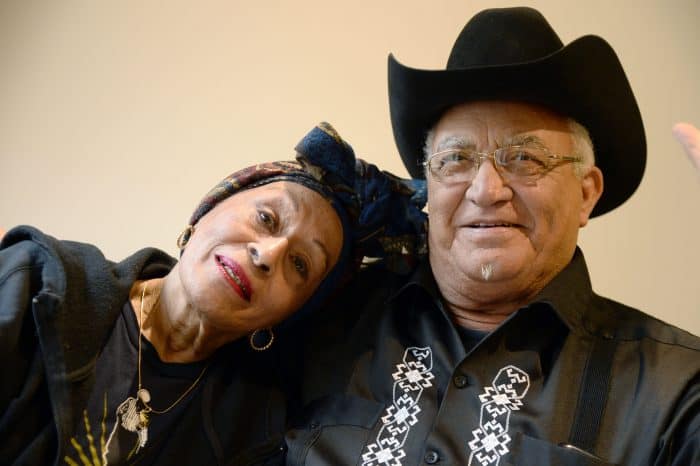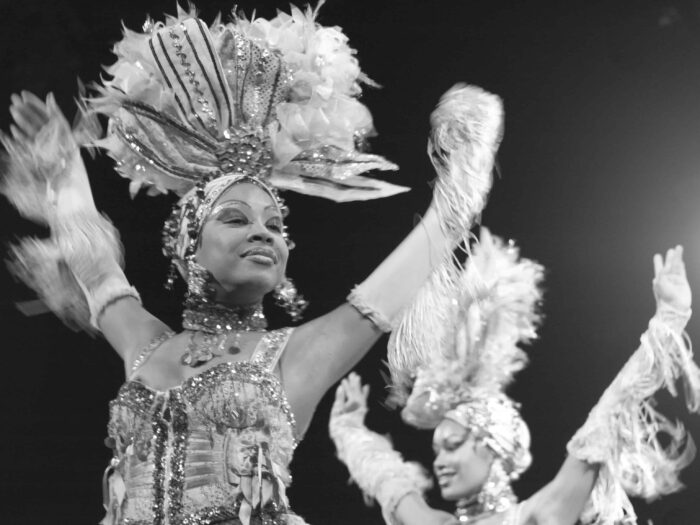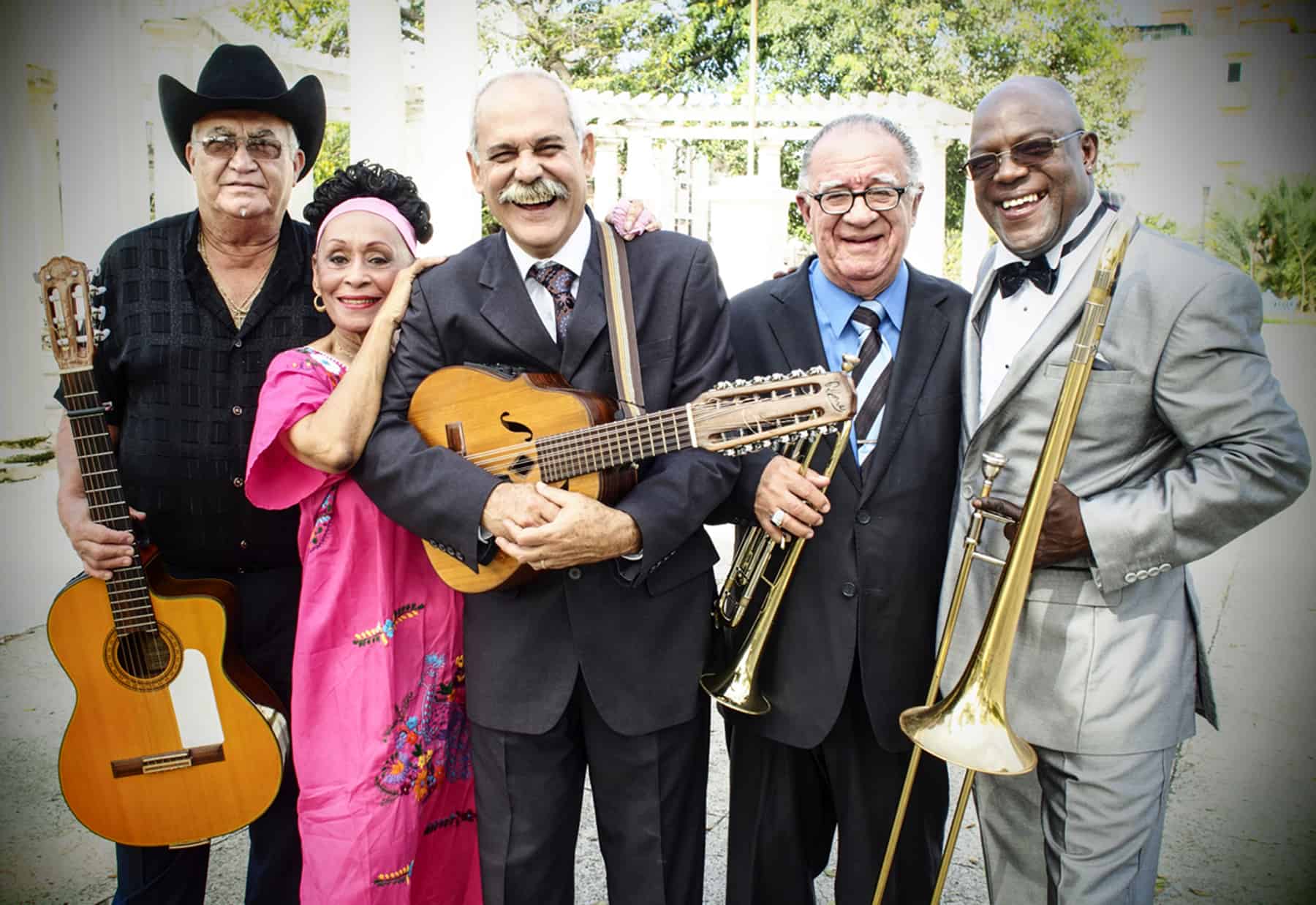When U.S. guitarist Ry Cooder and British producer Nick Gold rendezvoused in Cuba in April 1996 to record some of the aging masters of the island’s son music, they turned to Juan de Marcos González, the bandleader of the Havana band Sierra Maestra.
The foreigners told him they wanted at least one woman for the sessions. For González, the choice was easy: Omara Portuondo, sometimes called “the Billie Holiday of Cuba.”
Legend has it that the members of the soon-to-be-dubbed Buena Vista Social Club were forgotten and down on their luck when Cooder and Gold found them. But Portuondo was still well-known and busy. At the time, this was just one more gig for her before an Asian tour.
“It wasn’t a surprise to me that we became famous,” the 84-year-old singer said by phone from Chicago, where she was performing as part of Orquesta Buena Vista Social Club’s “Adiós Tour.”
“We were famous before we joined this group. Ibrahim Ferrer, Eliades Ochoa, Compay Segundo and I were all popular singers, both with bands and as solos,” she said. “We all knew each other, and we all loved each other.”
The group’s 1997 Grammy Award-winning album, “Buena Vista Social Club,” ended up going platinum in the United States and selling more than eight million copies worldwide, and it’s widely credited for sparking renewed international interest in Cuban music and tourism. This year, 14 unreleased tracks — four from the 1996 sessions, six from subsequent studio sessions for solo albums by the band’s members, and four live performances — have been released as the album “Lost and Found.”
Portuondo, Ochoa and Barbarito Torres have reunited for the “Adios Tour.” Another alumnus from the 1996 sessions, trumpet soloist Manuel “Guajiro” Mirabal, also is on the tour, as are music director Jesús “Aguaje” Ramos and nine younger Cuban musicians steeped in the traditional sound.
The original cast on the 1997 album played only three concerts: two in Amsterdam and one at New York’s Carnegie Hall, which was filmed by director Wim Wenders for the Academy Award-winning documentary “Buena Vista Social Club.” After those three concerts, the band members made solo albums and toured as solo acts or as subgroups of the famous first lineup.
Over the years, many of the other key 1996 participants died: Segundo and pianist Rubén González in 2003, Ferrer in 2005, conguero Anga Díaz in 2006, bassist Orlando “Cachaito” López in 2009 and guitarist Manuel Galbán in 2011. Maybe this really is “adios.”
But the chain of inheritance is hard to break. Lisa-Kainde Díaz and Naomi Díaz, the twin daughters of Anga Díaz, earlier this year released their impressive debut album, “Ibeyi,” also their duo’s name, taken from the Yoruban word for “twins.” Blending Cuban rhythms, electronic keyboards and samplers and close-harmony vocals, they carry “son” into the 21st century.
One inescapable model for their female harmonies was the quartet Cuarteto d’Aida, which featured Portuondo from 1953 through 1967. The group was part of the “feeling” music movement that swept through Cuba at the beginning of the 1950s. This musical new wave emphasized the free interpretation of Afro-Cuban singing over the notated precision of the Spanish conservatories, and Portuondo emerged as perhaps its most gifted role model.
“I did ‘feeling’ music because all the younger people were doing this new kind of music that relied more on emotion and interpretation than on composition,” she said. “I was singing like that for a long time before the Buena Vista Social Club, and for a long time after.”

Cuarteto d’Aida often performed at Havana’s Tropicana, the most famous nightclub in the Caribbean in the ’50s. Trees grew between tables within the giant, arched windows, and scantily clad, multi-feathered chorus girls danced in the aisles and on the catwalks overhead. When Nat King Cole came to Cuba in 1958 to record his first Spanish-language album, “Cole Español,” he played the Tropicana.
“I was singing with the Aida Quartet,” Portuondo recalled, “and we sang with him at the Tropicana. He was a wonderful musician and a wonderful gentleman. He wanted to sing the real Cuban music, and we helped him do that.”

Early in 1959, however, the Cuban Revolution toppled the Fulgencio Batista dictatorship and seized control of Havana’s nightclubs from such American mobsters as Meyer Lansky and Santo Trafficante. U.S. President Dwight Eisenhower imposed an embargo on travel and trade with Cuba in 1961, and it wasn’t until this past December that President Obama announced plans to reestablish diplomatic ties with Cuba.
There’s no question that the international success of the Buena Vista Social Club has made a small contribution to the easing of tensions between Cuba and the rest of the world.
“Music is the language of all the people in the world, not just in Cuba, but also in the United States and Europe,” Portuondo said. “It helps people to understand each other better. When you do music, people enjoy it so much that it doesn’t matter what countries they’re from. If I sing a love song in Spanish, I don’t know how, but everyone understands the song and feels romantic. If I do a song with rhythm, everyone understands the beat and dances along.”
For many listeners, their warm feelings for Cuban music and the Cuban people began with that 1997 Buena Vista Social Club album. The “Adiós Tour” offers perhaps the last chance to share an evening with some of the club’s original members.
© 2015, The Washington Post






